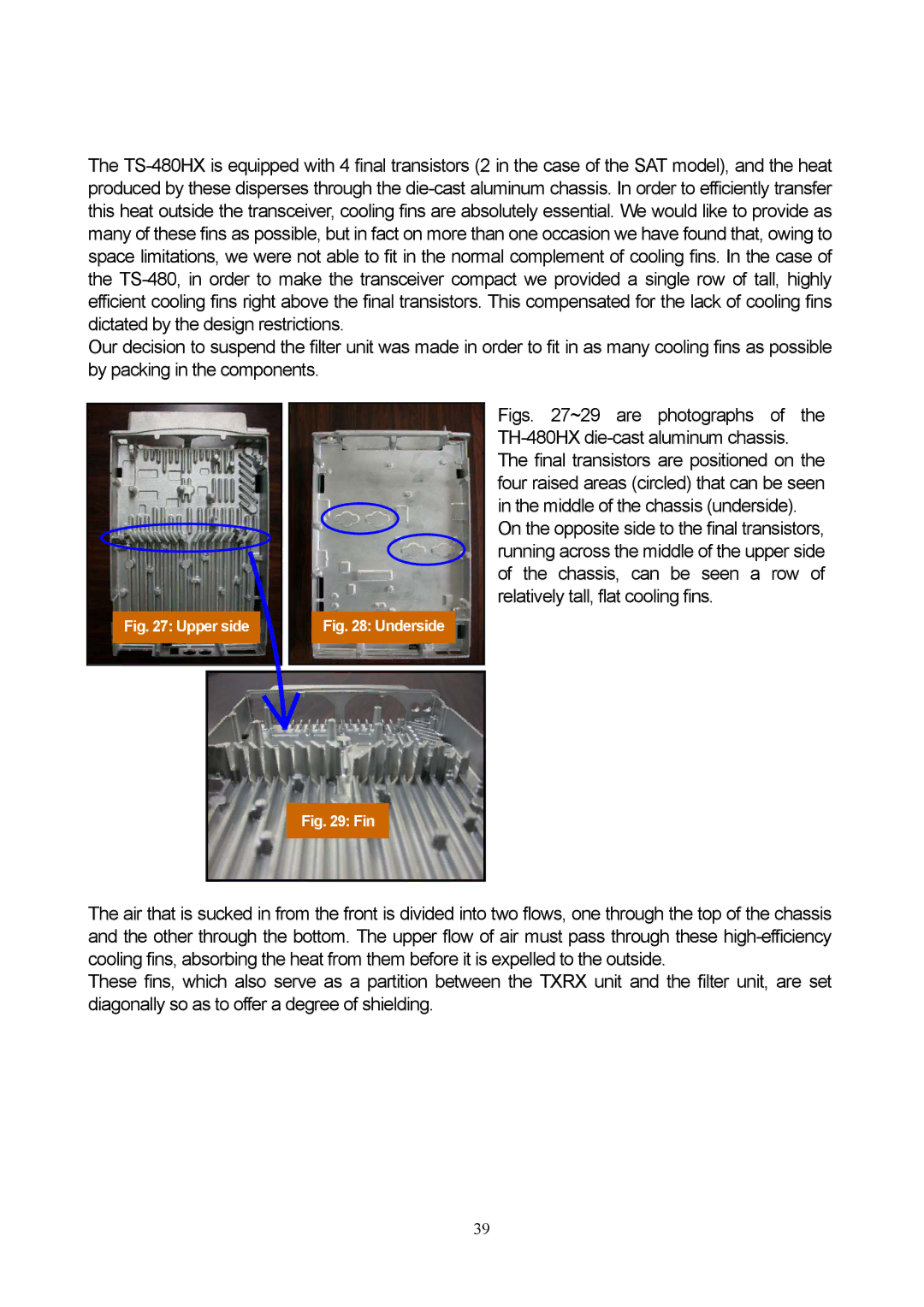The TS-480HX is equipped with 4 final transistors (2 in the case of the SAT model), and the heat produced by these disperses through the die-cast aluminum chassis. In order to efficiently transfer this heat outside the transceiver, cooling fins are absolutely essential. We would like to provide as many of these fins as possible, but in fact on more than one occasion we have found that, owing to space limitations, we were not able to fit in the normal complement of cooling fins. In the case of the TS-480, in order to make the transceiver compact we provided a single row of tall, highly efficient cooling fins right above the final transistors. This compensated for the lack of cooling fins dictated by the design restrictions.
Our decision to suspend the filter unit was made in order to fit in as many cooling fins as possible by packing in the components.
Fig. 27: Upper side
Fig. 28: Underside
Figs. 27~29 are photographs of the TH-480HX die-cast aluminum chassis. The final transistors are positioned on the four raised areas (circled) that can be seen in the middle of the chassis (underside). On the opposite side to the final transistors, running across the middle of the upper side of the chassis, can be seen a row of relatively tall, flat cooling fins.
The air that is sucked in from the front is divided into two flows, one through the top of the chassis and the other through the bottom. The upper flow of air must pass through these high-efficiency cooling fins, absorbing the heat from them before it is expelled to the outside.
These fins, which also serve as a partition between the TXRX unit and the filter unit, are set diagonally so as to offer a degree of shielding.
39

